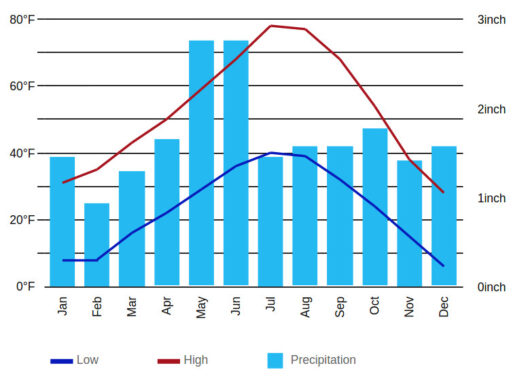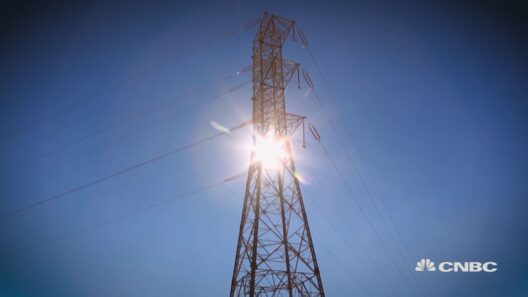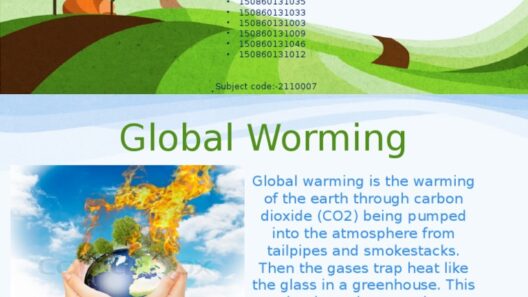The relationship between sea level rise and climate change is not merely a one-dimensional association; it is an intricate, multifaceted climate loop that exacerbates the very circumstances prompting its existence. As global temperatures escalate due to anthropogenic greenhouse gas emissions, the resulting sea level rise presents alarming implications for ecosystems and human societies alike. How can a rising sea, a seemingly passive phenomenon, amplify global warming itself? This question unveils the paradox at the core of our environmental challenges.
To comprehend the climate loop, we must first explore the fundamental mechanics of sea level rise. Sea levels rise primarily due to two factors: the thermal expansion of seawater as it warms and the melting of ice sheets and glaciers. The latter has become increasingly pronounced, with polar regions undergoing dramatic changes. The Greenland and Antarctic ice sheets, for example, are major contributors to global sea level rise as they shed enormous volumes of freshwater into the seas. This melting is not merely an isolated event; it has broader implications for the planet’s thermal and climatic systems.
Now, let’s consider how this influx of freshwater interacts with ocean currents. The ocean serves as a heat sink, absorbing excess heat from the atmosphere. However, when significant volumes of freshwater enter the ocean, it can disrupt the delicate balance of salinity and density that drives major ocean currents. Such perturbation can lead to alterations in the North Atlantic Current and, consequently, the Gulf Stream. This dynamic interplay can undermine the ocean’s ability to transport heat effectively, leading to regional cooling even as the global average temperature climbs. Picture an immense conveyor belt—when it stalls, it doesn’t merely disrupt transportation; it cascades into unforeseen climatic ramifications.
Furthermore, the melting ice contributes to rising sea levels, but it also accelerates global warming through a feedback mechanism known as the albedo effect. Ice and snow reflect sunlight, maintaining a cooler planet. As ice diminishes, darker ocean waters and land surfaces emerge, absorbing more solar radiation. This cycle enhances the rate of warming, essentially creating a positive feedback loop. Each drop in albedo due to melting ice translates into greater heat absorption, which in turn accelerates further ice loss. Thus, the question arises: how do we confront a cycle that accelerates its own destructive tendencies?
Moreover, the implications of sea level rise extend beyond physical geography. As coastlines erode, human habitation faces increasing vulnerability. Storm surges and high tides become exacerbated, leading to flooding events that threaten infrastructure, public safety, and livelihoods. Inhabitants of vulnerable low-lying areas may find their communities submerged or rendered uninhabitable, driving climate migration. This social upheaval introduces complex challenges such as resource allocation, humanitarian assistance, and regional stability. Quite provocatively, what happens to our society as we traverse a world where entire regions become climate refugees?
The intertwining of socio-economic factors with environmental shifts deepens the challenge. A rising sea does not discriminate; it affects affluent communities and underserved populations alike, albeit with disproportionate consequences. Wealthier areas possess the means to construct elaborate seawalls and undertake advanced engineering projects to mitigate rising waters, while economically disadvantaged populations often lack the resources or political clout to protect themselves. This disparity raises critical questions about equity and justice within the climate discourse. How do we forge a future that recognizes and addresses these inequalities while implementing effective climate policies?
To respond to the repercussions of sea level rise and its role in reinforcing global warming, society must embrace a multi-faceted strategy. Firstly, there is an urgent need for rigorous scientific research to improve our understanding of these interactions. Enhanced climate models can better predict changes in ocean currents, ice sheet dynamics, and regional climatic impacts, enabling us to anticipate shifts before they escalate into crises.
Furthermore, public awareness and education are paramount. Communities need to understand the implications of climate change, and the notion of ‘climate literacy’ must be prioritized. The more citizens comprehend the challenges posed by rising sea levels, the more likely they are to support sustainable practices and policy changes. Effective communication can galvanize local and global initiatives aimed at combating climate change while fostering a sense of shared responsibility.
Finally, cooperative global action is essential. Climate change knows no borders. Internally displaced individuals and nations confronting adverse effects must receive support not just for recovery but for long-term adaptation. Innovative approaches such as managed retreat from vulnerable coastal areas, investment in green infrastructure, and promotion of sustainable development can all contribute to a resilient future.
Understanding the interplay between sea level rise and global warming reveals a perplexing climate loop, one that warrants our immediate attention. As we ponder our collective future, let us not shy away from grappling with these challenges. Instead, we must confront them head-on, transforming questions into actions and uncertainties into solutions. For in the face of our most pressing climatic challenges lies the opportunity to galvanize collective action towards a sustainable and equitable future.







